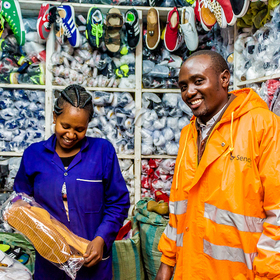
Sendy Logistics Challenge
Helping Kenya
$7 000 USD
Challenge completed almost 6 years ago
Prediction
2171 joined
448 active
Start
Aug 23, 19
Close
Nov 25, 19
Reveal
Nov 26, 19
Using Uber movement data
Help · 4 Nov 2019, 14:34 · 9
In Uber Time, can anyone share how to obtain Sourceid and dstid from Longitude and Latitude?
Hello,
u can use Point and Polygon from shapely : from shapely.geometry import Point, Polygon
create your point and polygon :
p = Point(24.952242, 60.1696017) poly = Polygon( [(24.950899, 60.169158), (24.953492, 60.169158), (24.953510, 60.170104), (24.950958, 60.169990)])
after that you can check if your polygon contains your point :
poly.contains(p)
or if your point is in polygon :
p.within(poly)
Thanks Yos.This makes sense. I will try it.
There is a json file called sublocations in the uber data defining the boundaries of each 'district' in Nairobi. You have to use a geocoding library to map your points ( you have to do some searching inside the polygones ) to those districts.
The ID's obtained are sourceid for a pickup point, dstid for a destination point.
Thanks Blenz. I have downloaded the sublocations file. Will try now.
Has adding the Uber movement data improve the results for anyone?
same question here
Uber data did'nt give me much improvement
@seddik11, how many seconds improvement did you get on the leaderboard?
Hardly anything